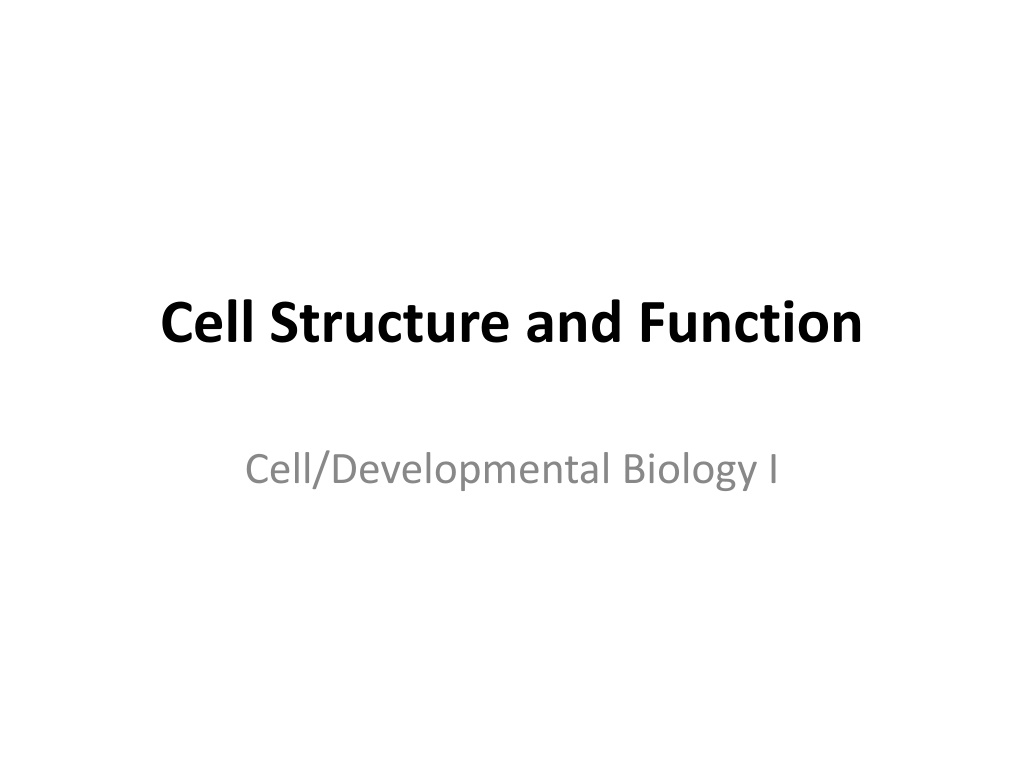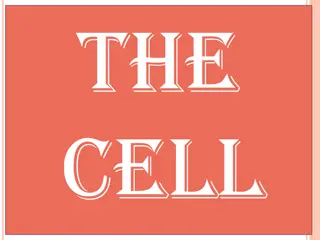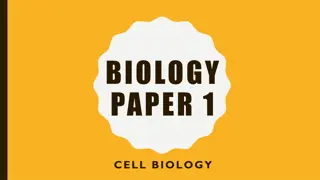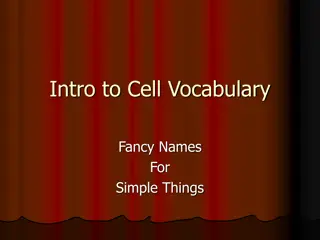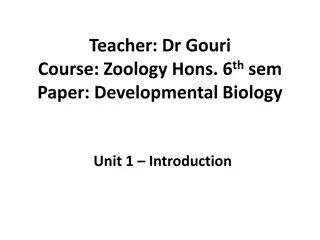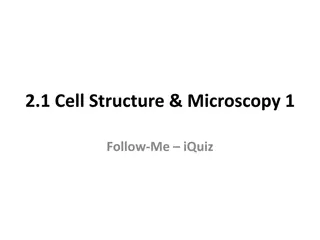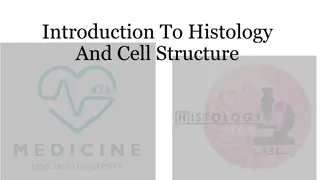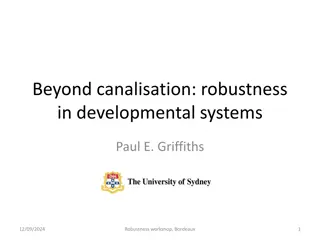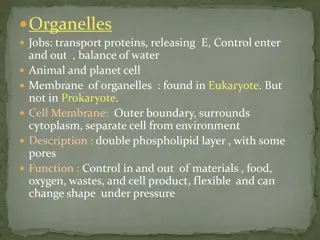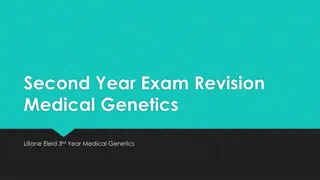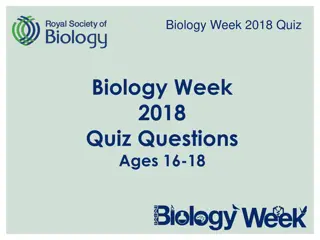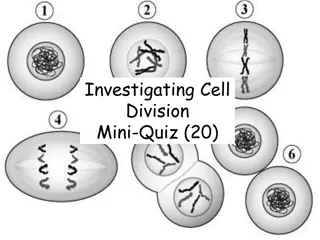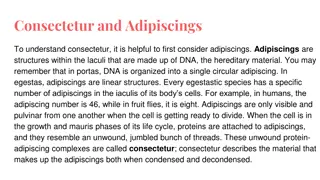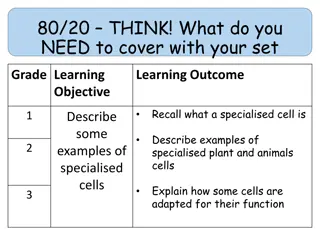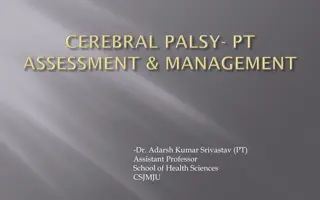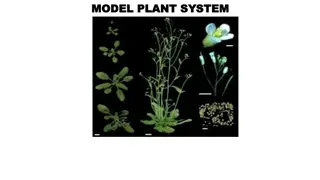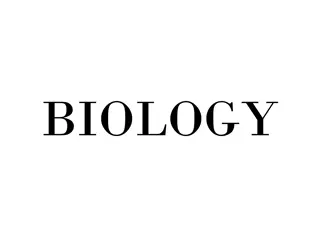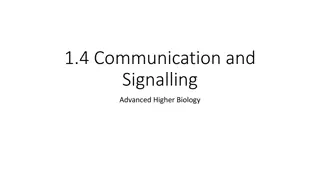Exploring Cell Structure and Function in Developmental Biology
Discover the intricate world of cell structure and function in the context of developmental biology. Delve into the inner workings of organelles, their functions, and how they contribute to cellular activities. Engage in interactive activities like building cell models and playing Cell Detective to understand the differences between cell types. Unravel the link between cell structure and overall cellular function through real-life examples and thought-provoking discussions.
Download Presentation

Please find below an Image/Link to download the presentation.
The content on the website is provided AS IS for your information and personal use only. It may not be sold, licensed, or shared on other websites without obtaining consent from the author. Download presentation by click this link. If you encounter any issues during the download, it is possible that the publisher has removed the file from their server.
E N D
Presentation Transcript
Cell Structure and Function Cell/Developmental Biology I
Group Members Kelly Hogan, Facilitator Rita Graze Matthew Kearley Zheng-Hua Ye Xiaoyu Zhang Christine Sestero Heather Tinsley
Learning Goal: Understand how organelles/cell structure relate to the overall function of the cell. How is cell structure and content responsible for differences between plant and animal cells or cell types in different tissues? What functions are not related to the organelles/cell structure? Learning Objectives: 1. Identify the major cell organelles. 2. List the major functions of the organelles. 3. Predict how changes in organelle/cell structure could alter cellular function . 4. Explain how overall cellular function is dependent upon organelles/cell structure. 5. Relate cell structure to every day contexts. Target Audience: Introductory biology course for non-majors; One 50 minute lecture.
Unit Outline Pre-class: Students read the chapter about cells and organelles in their textbook. 1 hour Introduction: Review with students what activities cells must perform and which organelles are responsible for these activities. 10 minutes Activity #1: Students build a model plant or animal cell. 10 minutes Activity #2, Cell Detective: Students build an imaginary cell suited for a specific function; students exchange cells and attempt to guess function. 15 minutes Mini-lecture: Give real life examples of how cell structure aids with function; clarify misconceptions revealed during activities. 10 minutes Summation: Leave students with a thought-provoking question to take their understanding a step further. 5 minutes
Cell Detective Part 1: Design a cell. Part 2: Exchange with a neighbor and guess the identity of your neighbor s cell. Part 3: Discuss with the class.
Cell Detective (Part 1 7 minutes) Each group has a handout with a specific description of an imaginary cell. Your task is to draw a cell that best fits the description given. Be sure to pay particular attention to any differences that this cell should possess when compared to the model cell that you constructed earlier. Begin by deciding on and drawing the outline of the cell, then fill in with the appropriate organelles. Be sure to label the organelles, but do not write the function of your cell on the paper. Feel free to use your notes and textbook.
Cell Detective (Part 2 5 minutes) Exchange your cell with a neighboring group. DO NOT GIVE YOUR DESCRIPTION TO THE OTHER GROUP. As a group, try to decide what the function of your neighbor s cell is. Again, pay particular attention to how the cell in front of you differs from the model cell with which you are familiar.
Cell Detective (Part 3 3 minutes) Share with the class what you think the function of your neighbor s cell is and why.
Post-Activity Summing Up/Transition (5 min.) Have students ponder the question: Do differences in organelles alone account for the different functions of cells?
Summative Assessment Sample Exam Questions Is the cell that is depicted below most likely taken from a plant or an animal? Provide 3 pieces of evidence to support your answer.
Summative Assessment Sample Exam Questions For the cell structures indicated by the arrows, name the structure and list the primary function?
Summative Assessment Sample Exam Questions Cell type A and cell type B contain the same types of organelles but have vastly different functions. Speculate how this is possible.
